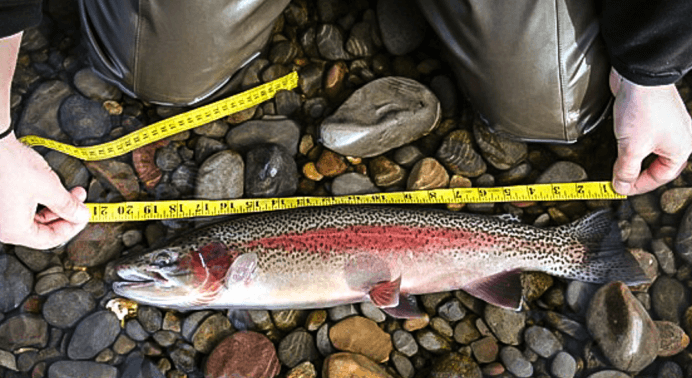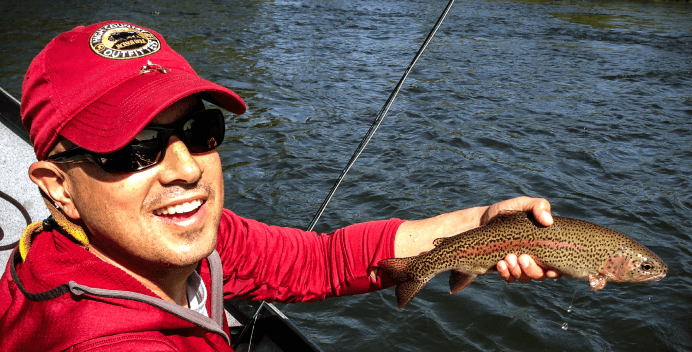McKenzie River Trout Fly Fishing Overview
The famous McKenzie River is a clear-water jewel that flows west out of Oregon’s Cascade Mountains to meet the Willamette River near Eugene, Track Town USA.
In Western Oregon we are blessed with a temperate climate year-round. Barring the immediate effects of a winter or spring rainstorm, rainbow and cutthroat trout are available to be caught every single month of the year.
In a typical year, my trout guiding begins on McKenzie River in March. Air temperatures throughout the fishing day usually range from the mid 40’s to the mid 50’s. The water flows are high compared to those of late spring and summer, but if the water is clear fish can be caught. And . . . it is unlikely that you will see another angler.
Nymph fishing is the most productive method through most of each winter and early spring day on the McKenzie. Midges and minute Baetis mayflies can offer the dry fly angler a chance to fish floating patterns during an unpredictable, brief window each day. During these hatches, the McKenzie River fly patterns may need to be quite exacting, and expertly presented.
As the winter progresses and the river temperature flirts with 47 or 48 degrees the famous McKenzie River March Brown mayfly hatch starts at the warmest part of the day, usually mid to late afternoon. March Browns will predominate most of the dry fly action March and April.
When the March Browns come on strong our fishing guides may suggest splitting the fishing day between the McKenzie and Willamette River. The Willamette below the McKenzie provides some secluded, productive trout fishing in the spring. Many of our clients like the two-river experience for a variety of scenery and fishing experience.
Caddisflies and Light Cahill-type mayflies predominate the surface as the March Browns wane. But the astute, skilled angler will rely on nymphs most of the fishing day.
The native rainbow trout and hatchery stocks of McKenzie River are abundant and willing. There’s a healthy populations of native cutthroat trout, too.
My McKenzie River fly fishing guide trips begin in March, dependent on weather and river levels. If the water is warm enough, early March will see the beginning of the mid-day March Brown mayfly hatch. Rising fish will take a dry or cripple pattern with consistency. When the McKenzie River trout are not rising, a well-presented deep nymph will produce some of the year’s largest trout from March thru April.
As the water continues to warm on the McKenzie River into May thru July, surface fishing with dry flies and soft hackle patterns is consistent.
What will you need?
- An Oregon fishing license, available online or from various retailers.
- Comfortable clothes, including a long-sleeve shirt for sun protection.
- Note: Please apply sunscreen BEFORE you leave home or your lodging. It is imperative that you wash your hands thoroughly with soap to prevent the possibility of imparting the sunscreen scent to the flies you will be casting. A wet fly or nymph fly smelling of sunscreen will NOT catch fish. The scent is repugnant to them. Attempting to rinse off WATERPROOF sunscreen with river water is a futile exercise. Apply in the morning before you leave.
- Glasses/sunglasses for eye protection at all times.
- Waders. Though all fishing is done from the boat, anglers sometimes prefer to get out of the boat to land an exceptional fish and have their photo taken kneeling in the shallows.
What is provided?
- Three ready-to-fish fly rods for each angler, and flies.
- Snacks, beverages, and lunches.
- A good time casting to beautiful, hard-fighting trout on a scenic river.
The logistics
- We will meet on the river at a designated time and location. Please be on time.
- Typically, we will meet on the river at 7 am sharp, to take out about 3:30 pm.
Texting is always the best means of communication. (541) 207-4000


